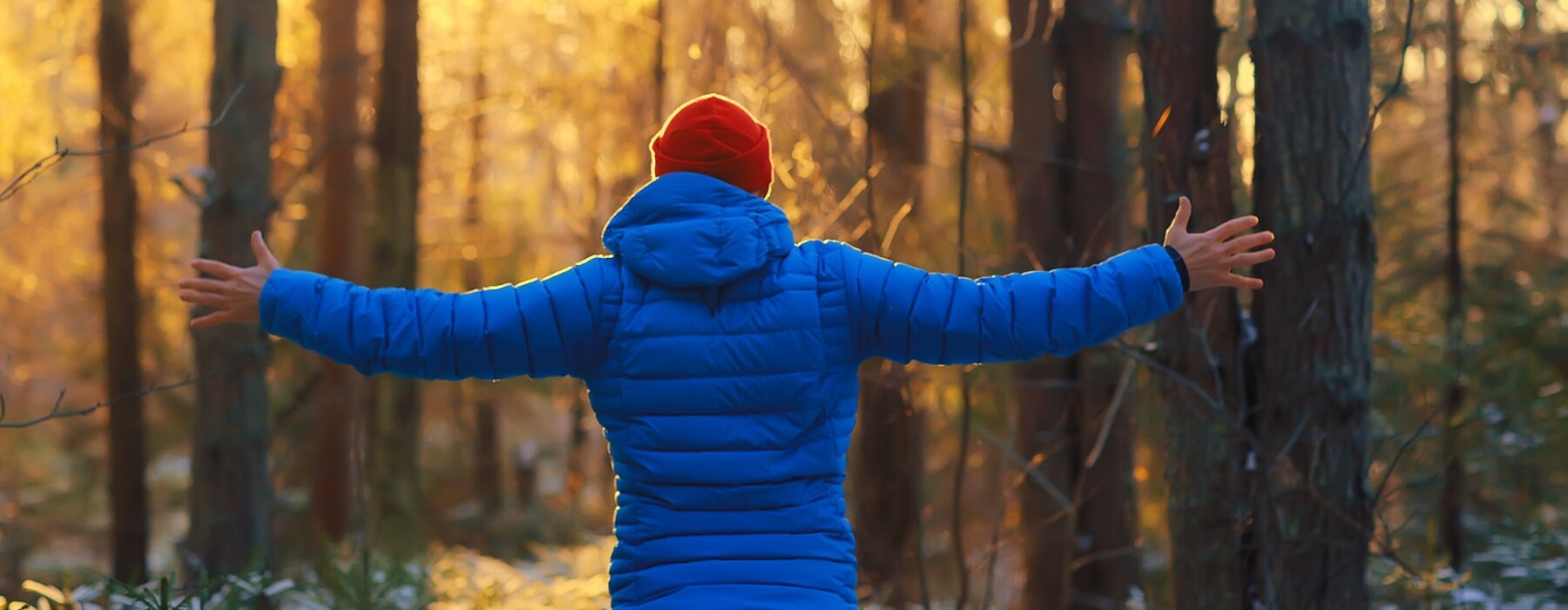
Having some of the best down jackets on your next adventures should be an essential gear for hiking, backpacking, skiing, climbing and just about any other outdoor activity, a good down jacket is the key to staying warm and looking great. stylish wherever your active life takes you. But not all down jackets are the same. In fact, some of them may be complete scams as they will not provide you with all the necessary comfort that every athlete or trail explorer needs, otherwise your performance during walks over the highest passes of many circuits will be severely affected. trekking in the Andes mountain range.
This review of the best down jackets is the result of many years of experience, in which we and our high mountain guides have been using different models of down jackets. We tested the jackets in all kinds of environments and scenarios in the Andes, from short hikes to long expeditions, notoriously wet and cold spaces, to see how they perform under demanding conditions and extended use. Down jackets are very activity specific and you will need to find the right one for your purposes. From fast, light mid-season hikes to extremely cold weather, budget and high-end picks, here are our picks for the best men’s and women’s down jackets for all types of outdoor uses.
Price: $ 329 USD
Weight: 15.1 oz / 428 gr
Insulation: 800 Traceable down goose
Outer fabric: 100% recycled ripstop nylon fabric with DWR
Pros: Great quality for the price, packs into its own pocket, hood & hem adjustments, wind/weather-resistant (DWR finish), layers easily, durable, warm, environmentally friendly, well-fitting, excellent styling.
Cons: Not the lightest down jacket, not waterproof, slightly heavy.
The Patagonia Down Sweater Jacket (for men and women) is the one Jacket that has the best balance of quality, price, and longevity of the jackets we’ve tested. The jacket has all the usual features you’d expect from a puffer, including two zippered hand pockets, elasticated cuffs, and an adjustable hood and hem. It’s also a great option for hikers who want style points that count on the general population.
The Patagonia Down Sweater is one of the most popular down jackets in the world. A combination of eco-friendly design and manufacturing, along with a good lightweight fit, makes this a great down jacket. The combination of quality down, good outer fabric, functional fit and a good set of hand pockets and chest pockets make it a good down jacket. If you’re heading out on the trails or traveling the world, this is one of the best down jackets on the market.
The Patagonia 800-fill down fill in a DWR (durable water repellent) recycled ripstop nylon outer to create this jacket. Down fill quality is determined by filling a cylindrical container with one ounce of down and then compressing it for one minute. After the sixty seconds, the amount of space filled is considered the fill, so 600 cubic inches of down is equal to 600 fill. 900 fill is as good as it gets, so 800 fill is very quality. high. The warmth of a jacket is measured not only in the quality of the padding but also in the quantity. The Down Sweater has a decent amount of padding, making it a great midlayer piece.
Additionally, the jacket has some features to help trap heat. Elasticated cuffs, an adjustable hood and a drawcord at the waist help trap heat inside the jacket and keep the wind out. Definitely, this jacket is one of the best options if you plan to explore the Ausangate routes, the Inca Trail to Machu Picchu, the Lares Trek, the Ancascocha Trek, the Quelccaya Glacier Expedition, and any route in the Andes. Keep in mind that the weather conditions are highly variable throughout the day in the Andes, since in the morning there is intense cold above 3,500 masl, and when the sun begins to show some heat, for this reason we recommend always having at hand your feather or synthetic fiber jacket that will take care of the winds at sunset, or icy nights.

Price: $ 360 USD
Weight: 27 oz / 760 gr
Insulation: 800FP European Goose Down with Nikwax Fluorocarbon-Free Hydrophobic Finish (300g/ 10.6oz, Size L)
Outer fabric: Fabric Outer – Pertex Quantum Pro:,1000mm ,DWR 80/20 ,40g/m² ,100% nylon with Polyurethane coating
Pros: Very warm, highly compressible, hem & hood adjustments, fleece-lined pockets, 2-way zipper (climbing harness compatible), wind/weather-resistant, durable.
Cons: Expensive, heavy, bulky, too warm for most 3-season ultralight backpacking trips.
If you’re heading the expeditions to the Andes, Himalaya, or Patagonia the Positron Pro is a down-filled jacket with zoned construction to optimise warmth and mobility whilst minimising bulk, so you can endure prolonged exposure to very cold conditions. Designed for mountain and expedition use up to 6000m, the Positron Pro Jacket uses a Pertex Quantum Pro shell to provide protection from the weather and is filled with the highest quality 800FP down. Boxwall construction on the torso, hood and upper arms provides extra insulation on more exposed areas. Stitch-through construction on the underarms and side panels allows for increased mobility while reducing bulk, weight and packsize.
A two-way front zip with synthetic insulated baffle behind provides maximum warmth, and helmet compatible down filled hood has wired peak and face baffle. Concealed hood adjusters are easy to use with gloved hands. The Positron Pro is optimised to offer the perfect balance of mobility, comfort and protection in very cold conditions. Definitely, this jacket is one of the best options if you plan to explore the Ausangate routes, the Inca Trail to Machu Picchu, the Lares Trek, the Ancascocha Trek, the Quelccaya Glacier Expedition, and any route in the Andes. Keep in mind that the weather conditions are highly variable throughout the day in the Andes, since in the morning there is intense cold above 3,500 masl, and when the sun begins to show some heat, for this reason we recommend always having at hand your feather or synthetic fiber jacket that will take care of the winds at sunset, or icy nights.

Price: $ 365 USD
Weight: 11.8 oz / 335 gr
Insulation: 850 fill down + Coreloft 80 and 100
Outer fabric: 850 European Goose Down Fill
Pros: Moisture resistant outer face fabric, breathable, lightweight, highly compressible, sleek & stylish, wind/weather-resistant (DWR finish), layers easily
Cons:. Expensive, not very adjustable, no chest pocket, less durable than other jackets.
As a second layer for winter climbing, or as a stand-alone piece for camping, the Cerium provides warmth on breaks and has proven itself in alpine terrain. Driven by our obsessive attention to detail, we’ve refined the design, used sustainable materials, and maintained its exceptional coat-to-weight ratio. Responsibly sourced 850 fill down, with Coreloft™ hollow fiber in areas most prone to wetness, provides premium insulation. The Arato™ 15D recycled nylon outer shell is lightweight and durable, a bio-sourced lining reduces the use of petroleum, and the padded StormHood™ extends coverage.
Its cut keeps it close to the body on the chest, waist, hips and thighs. It packs little, moves with the body, and wears comfortably under or over layers. The hood has drawcords with a single pull and is filled with down, it is compatible with the helmet. It has two zippered hand pockets, it also has an interior zippered security pocket. The front zipper is complete, with cord pullers that reduce noise and are easy to hold. Drawcord at adjustable hem insulates against drafts. Definitely, this jacket is one of the best options if you plan to explore the Ausangate routes, the Inca Trail to Machu Picchu, the Lares Trek, the Ancascocha Trek, the Quelccaya Glacier Expedition, and any route in the Andes. Keep in mind that the weather conditions are highly variable throughout the day in the Andes, since in the morning there is intense cold above 3,500 masl, and when the sun begins to show some heat, for this reason we recommend always having at hand your feather or synthetic fiber jacket that will take care of the winds at sunset, or icy nights.
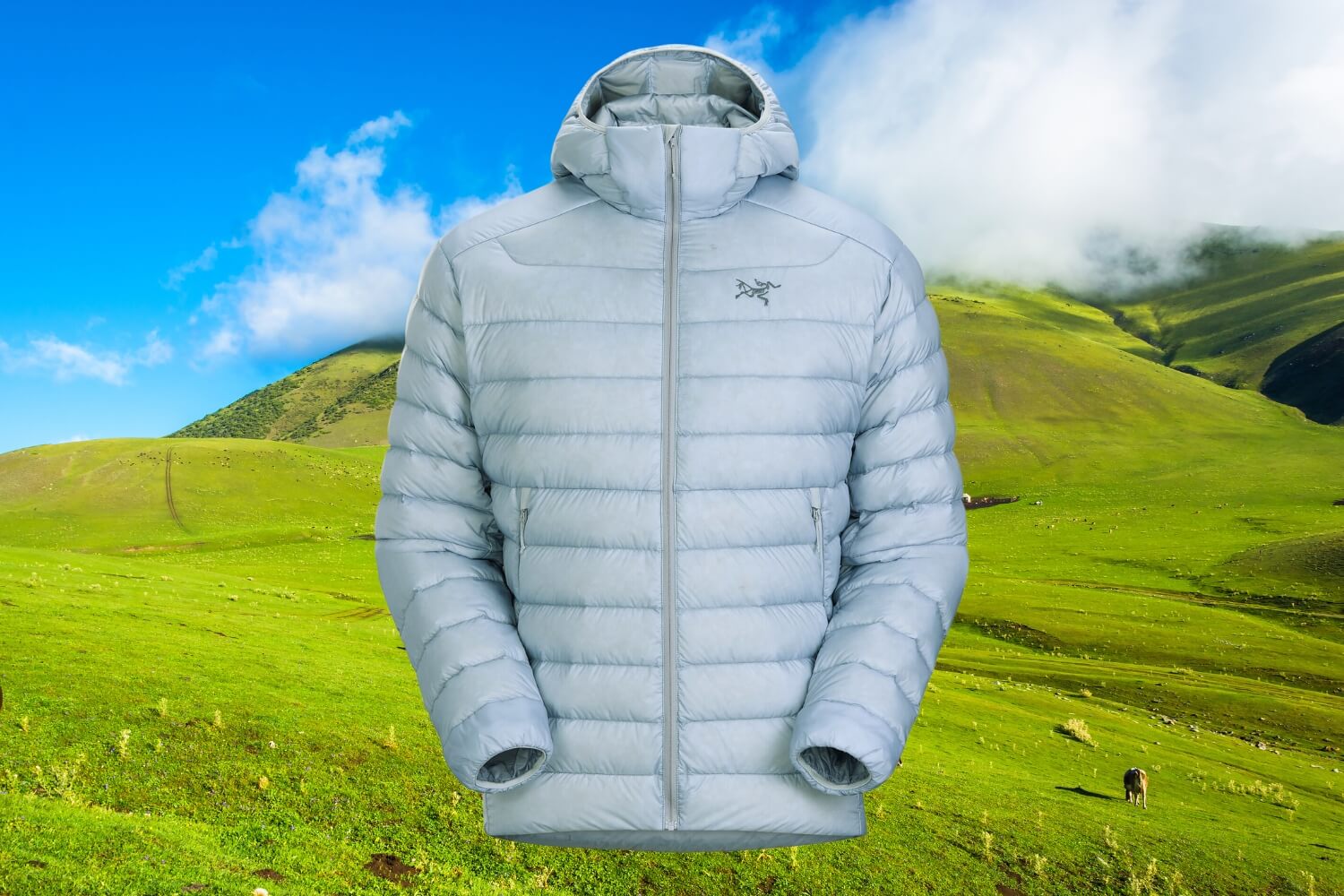
Price: $ 360 USD
Weight: 8.8 oz / 249 gr
Insulation: 800-fill RDS®-certified down|90.0% Goose Down, 10.0% Goose Feather.
Outer fabric: Whisperer 10D x 10D Ripstop, Solids: 100% Recycled Nylon ; Prints: 100% Nylon
Pros: Ultralight, highly compressible, packs into its own pocket, wind/weather-resistant (DWR finish), incredible warmth for the weight.
Cons: No hydrophobic down, no adjustments in the Hood.
The Ghost Whisperer 2 is one of the lightest, most packable and warmest jackets with decent water resistance. These attributes make it one of the best down jackets on the market. While a bit thin for extreme cold weather, the jacket is excellent for cold weather activities like winter hiking, ski touring. If you’re looking for a technical piece for mountain adventures, the Ghost Whisperer has it for you.
This jacket tends to work best while on the go. It fits well under a backpack belt and the drawstring at the bottom will help trap heat inside. If you’re hiking in freezing temperatures, be sure to layer with another piece. The recycled nylon shell used by Mountain Hardwear works well as a lightweight shell for the down fill.
Having a comfortable fit in a jacket is crucial as it allows for mobility in the mountains and the Ghost Whisperer performs very well. The jacket fits close to the body without extra space or excess material. The jacket fits inside one of its zippered hand pockets and can then be easily packed inside a backpack or easily stowed away on the go.
It is the smallest compressed jacket, which comes with its own little bag. The jacket comes with two handwarmer pockets with slim zippers. The jacket lacks internal hidden pockets like some of the other models. The Ghost Whisperer is designed for intense skiing or hiking, in moderately cold temperatures, the Ghost Whisperer provides an excellent layer when temperatures fluctuate between day and night. Definitely, this jacket is one of the best options if you plan to explore the Ausangate routes, the Inca Trail to Machu Picchu, the Lares Trek, the Ancascocha Trek, the Quelccaya Glacier Expedition, and any route in the Andes. Keep in mind that the weather conditions are highly variable throughout the day in the Andes, since in the morning there is intense cold above 3,500 masl, and when the sun begins to show some heat, for this reason we recommend always having at hand your feather or synthetic fiber jacket that will take care of the winds at sunset, or icy nights.

Price: $ 380 USD
Weight: 16 oz / 454 gr
Insulation: 800 fill Pro Down with water repellency; certified to the Responsible Down Standard (RDS) by Control Union.
Outer fabric: 20D 38 g/m² 100% recycled nylon ripstop with non-PFC durable water-repellent (non-PFC DWR) finish.
Pros: Hydrophobic Down, Recycled shell fabric with DWR, Very warm, One of the best lightweight weather-resistant jackets.
Cons: Heavier than the other jackets, Not very compact.
An impressively lightweight, down mid-layer, the North Face Men’s Summit Breithorn Hoodie is optimized for warmth and packability. The 800 fill ProDown retains its loft in wet conditions, offering superior warmth while remaining highly compressible. The durable, water-resistant, ripstop exterior fabric keeps this jacket strong for your high-alpine journeys. The secure-zip chest pocket is easily accessible even with a pack for your key items, with an additional two large internal mesh drop pockets providing added storage. The attached, helmet compatible hood with a pre-tensioned elastic opening, stretch-knit cuffs with FlashDry technology, and adjustable hem with cord lock on the right side give this jacket a personalized, no-fuss design. Both the raglan sleeves and underarm gussets offer full all-around mobility. The lightweight and versatile design of this midlayer, along with the classy colorways, make it a strong choice for your favorite ski days, demanding alpine ascents, or chilly summer mornings with a strong cup of coffee.
The helmet-compatible hood has plenty of space to be worn over a thick beanie with a pom on top or layered underneath a ski helmet on a cold day. Stretch-knit cuffs hold tight to the wrists, effectively stopping cold air from rushing up the sleeves. Yet while wearing, it feels like a soft cloud and offers excellent warmth and coverage for its weight. It compresses into its own hand pocket, with a little finagling and squeezing. Once packed away, it becomes a long, slender package with a fabric carabiner loop located at the end of the zipper, letting it dangle at an angle off of your pack.
The ProDown insulation is designed to retain loft (and therefore warmth) even when wet, and a DWR finish helps to seal out moisture. The reverse-coil zippers also help keep water out. Definitely, this jacket is one of the best options if you plan to explore the Ausangate routes, the Inca Trail to Machu Picchu, the Lares Trek, the Ancascocha Trek, the Quelccaya Glacier Expedition, and any route in the Andes. Keep in mind that the weather conditions are highly variable throughout the day in the Andes, since in the morning there is intense cold above 3,500 masl, and when the sun begins to show some heat, for this reason we recommend always having at hand your feather or synthetic fiber jacket that will take care of the winds at sunset, or icy nights.

Price: $ 100 USD
Weight: 11 oz / 311 gr
Insulation: 650-fill-power down (bluesign approved)
Outer fabric: Recycled nylon taffeta (bluesign approved)
Pros: lightweight, very affordable, ultralight, highly compressible, packs into its own pocket, wind/weather-resistant (DWR), layers easily
Cons: Less than ideal fill quality, poor performance, basic features, not as warm as some jackets, less durable than some jackets (general con of UL jackets), no hem or hood adjustments (hooded version), no chest pocket, boxy fit
The REI Co-op 650 Down 2.0 does well when you consider the price. Significantly less technical than the other jackets, it’s also significantly less expensive. If you’re looking for a jacket for short hikes, chilly afternoons, or general use around town, this piece offers a lot of value at a budget price. The REI Co-op Down 650 offers quite a bit of warmth for its weight. While the jacket lacks any notable distinction in terms of features, weight, warmth, or comfort, it excels in terms of price. It offers the basic necessities of an insulated jacket and compresses into its own pocket and offers some protection from light rain. These attributes make it a good choice for the budget conscious buyer.
This coat’s water resistance comes entirely from the DWR coating on the recycled nylon shell. The lining provided some help in light storms in the Andean mountains, but when the skies opened up, it quickly got wet, as did the down. The REI Down 650 2.0 has a slightly boxy and loose fit. It lacks the tapered athletic feel of a down jacket worn for fitness activities and our testers were hesitant to grab it when they needed a cross-country or ice-climbing layer.
The REI Down 650 has two zippered hand pockets, as well as two internal pockets that make up all the storage space. The jacket lacks a cinched waist, which makes a square torso difficult to fit and also means that cold gusts could easily enter the garment. The hood is designed to stay in place without laces or adjustments, which keeps the weight down but sometimes causes the hood to fly off. Definitely, this jacket is one of the best options if you plan to explore the Ausangate routes, the Inca Trail to Machu Picchu, the Lares Trek, the Ancascocha Trek, the Quelccaya Glacier Expedition, Inca Quarry Trail, and any route in the Andes. Keep in mind that the weather conditions are highly variable throughout the day in the Andes, since in the morning there is intense cold above 3,500 masl, and when the sun begins to show some heat, for this reason we recommend always having at hand your feather or synthetic fiber jacket that will take care of the winds at sunset, or icy nights.

Price: $ 479 USD
Weight: 11.8 oz / 333 gr
Insulation: 1000 Fill Power EX Down
Outer fabric: 7-denier Ballistic Airlight nylon ripstop (water repellent finish)
Pros: Ultralight, best warmth-to-weight ratio, highly compressible, hem & hood adjustments, wind/weather-resistant (Ballistic Airlight with DWR finish), layers easily.
Cons: Very expensive, super thin shell fabric is lacking in durability, no chest pocket
The Montbell Plasma 1000 pushes the limits of jacket technology. The Plasma 1000 is your classic “puffy” down jacket. It’s super warm, super light, super compressible, and super great for travel. Wrapped inside that 7D nylon is 1000-fill goose down. “Fill power” is a measurement related to the volume (in cubic inches) that one ounce of down will fit into. A lot of premium jackets typically use 800-900 fill power which is plenty, however Montbell really pushes it to 1,000 on this jacket and the warmth to weight ratio shows. Given the durability and weight, this thing is surprisingly warm.
The 7D nylon fabric is Montbell’s “Airlight Ballistic Nylon”. According to their website, they use a highly technical production process to create extremely fine and super-thin yarns that are then woven into ultralight chiffon fabrics that share the same characteristics as ballistic nylon. The difference is that this material is 1.5 times more abrasion resistant than other fabrics of similar weight and has 3 times more tear resistance than nylon, which is almost 20% heavier.
The exterior is coated with DWR, which helps with increased weather resistance. However, if you plan on wearing this in inclement weather or heavier rain, we definitely recommend picking up a rain shell that you can wear over it, as this thing isn’t meant to be a waterproof jacket. Prolonged exposure to rain will cause the water to soak up, which can start to affect the down. That being said, if you pair this with a solid rain shell, you’ll be well prepared for a wide variety of climates and weather conditions.
And lastly, there is a very unique stitching pattern on this jacket that we definitely need to mention. Montbell has implemented as few threads as possible to keep the down in place while staying as light as possible. You might not think this makes much of a difference, but it actually adds quite a bit of thread and stitching when you consider the entire exterior of the jacket. In addition to saving weight, this also saves some resources in the long run, making this jacket a bit more environmentally friendly. Definitely, this jacket is one of the best options if you plan to explore the Ausangate routes, the Inca Trail to Machu Picchu, the Lares Trek, the Ancascocha Trek, the Quelccaya Glacier Expedition, Salkantay Trek and any route in the Andes. Keep in mind that the weather conditions are highly variable throughout the day in the Andes, since in the morning there is intense cold above 3,500 masl, and when the sun begins to show some heat, for this reason we recommend always having at hand your feather or synthetic fiber jacket that will take care of the winds at sunset, or icy nights.
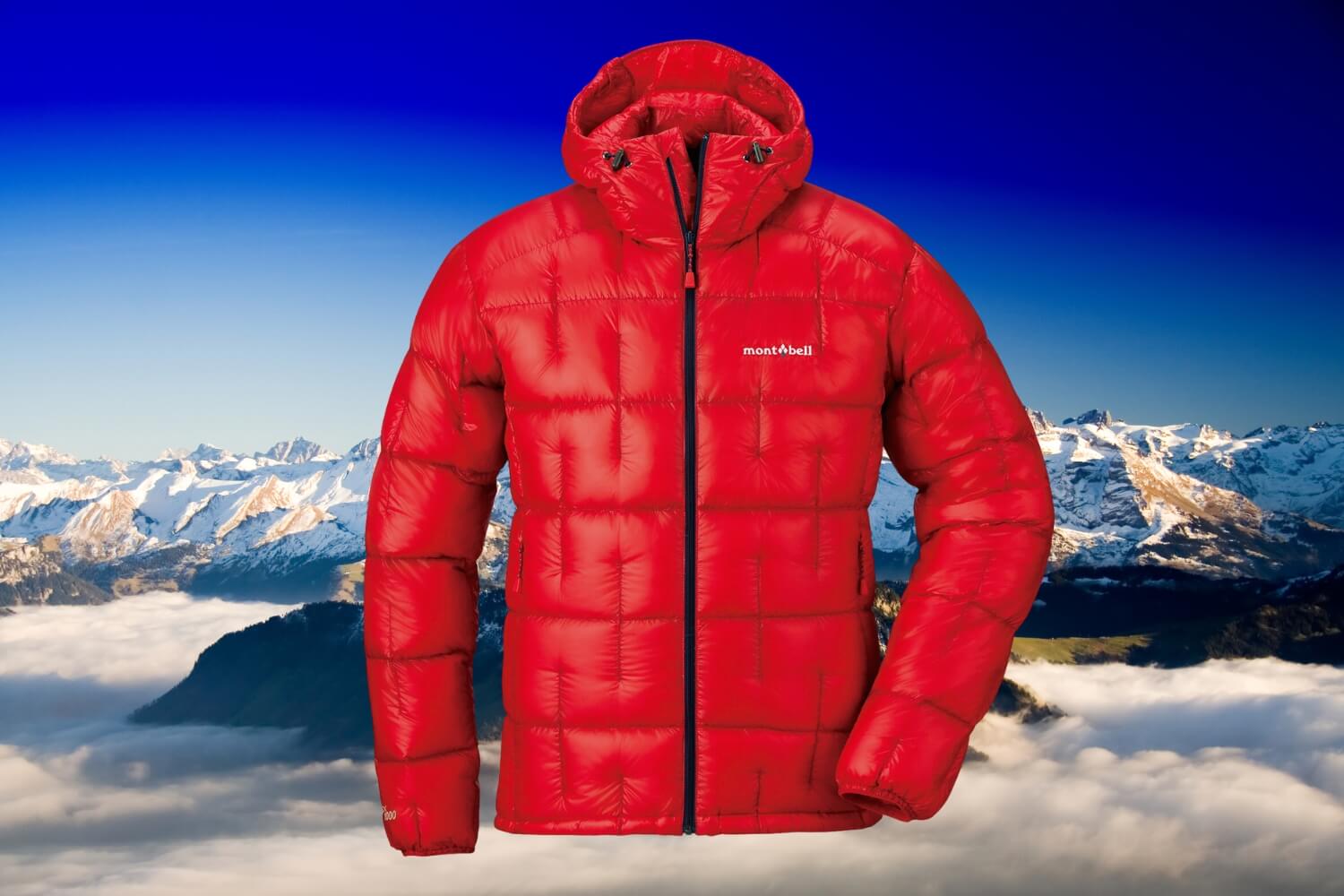
Price: $ 550 USD
Weight: 27.5 oz / 780 gr
Insulation: 90% Goose down, 10% Goose feather, insulation hood: 100% recycled polyester
Outer fabric: 100% Polyamide
Pros: Zoned-down and synthetic fill for improved moisture resistance, Excellent hood (though not climbing helmet-compatible), Plenty of practical pockets, Packable.
Cons: Mid-range fill power down, Down fill not hydrophobic, Slightly baggy cuffs
The Helly Hansen Verglas Glacier Down Jacket is a stylish yet functional looking puffer jacket, with a sculpted fit that still leaves plenty of room for layering. The midi baffles allow for good mobility and give a fairly streamlined silhouette, while also giving plenty of room for the 700 fill power up to the loft, providing welcome warmth. As with all the best jackets and down jackets, the Verglas Polar is also smartly built for wet conditions. Although the down fill itself does not have a hydrophobic treatment to improve moisture resistance, the fill is zoned so that areas such as the hood, shoulders, chest panel, underarms and the ends of the legs sleeves use Primaloft Silver synthetic padding. These are all areas that are prone to getting wet, so these measures ensure continued insulating performance in poor conditions.
The well-designed, fitted hood has a three-point adjustment to ensure a close and snug fit. It’s well insulated with that Primaloft padding and the chin zips up almost to the nose for great face protection. Admittedly, the low-profile hood design isn’t helmet-compatible, but this is a versatile jacket, not a dedicated mountaineering/mountaineering piece for technical use. It’s a 20-denier ripstop nylon, so it’s reasonably strong, but it also has an extremely soft handle that feels great to use. That makes it a great all-day jacket, as well as a welcome extra layer to pull out of your pack on cold-weather hikes. Definitely, this jacket is one of the best options if you plan to explore the Ausangate routes, the Inca Trail to Machu Picchu, the Lares Trek, the Ancascocha Trek, the Quelccaya Glacier Expedition, Trek to Huchuy Qosqo and any route in the Andes. Keep in mind that the weather conditions are highly variable throughout the day in the Andes, since in the morning there is intense cold above 3,500 masl, and when the sun begins to show some heat, for this reason we recommend always having at hand your feather or synthetic fiber jacket that will take care of the winds at sunset, or icy nights.

Price: $ 309 USD
Weight: 13.05 oz / 370 gr
Insulation: Mimic PLATINUM Ultracluster Graphene mixed with Recycled polyester, light, lofty, synthetic fibre cluster insulation with down-like feel.
Outer fabric: 100 % Recycled Polyamide. 10D ultra lightweight, down proof mini rip-stop fabric28g/m², bluesign approved.
Pros: Nano baffle lightweight construction, Ultra-lightweight 10D outer fabric, Two hand pockets, Elastic hem, Elastic Hood.
Cons: Little durability of the material against possible tears, not waterproof.
The L.I.M Mimic is a superlight insulator jacket with a difference. It uses graphene-containing insulation and a micro-baffle construction, making it extremely compact, yet still offering essential protection in changing weather conditions. The L.I.M Mimic uses an ultralight 10D recycled polyamide fabric. This outer fabric is down-proof, which will help ensure none of that lovely graphene insulation seeps out of the face fabric. It also makes use of a rip-stop fabric, so if the worst happens and the jacket rips, it will be a straight tear that is much easier to repair. This outer fabric has been treated with a DWR to help with water resistance.
The smartest part of this jacket is without a doubt the insulation. Haglofs uses his own Platinum Ultracluster Graphene Mimic throughout the jacket. This is a fully synthetic insulation designed to mimic the warmth characteristics of down. Instead of being one big sheet of insulation, it’s in little clumps like down; this means that it traps exceptional amounts of heat, but also shrinks to a fraction of its original size and weighs very little. If it does get wet, it will dry quickly and still provide warmth. Graphene is then added to evenly disperse body heat around the jacket, reducing heat loss through various areas of the jacket. As well as dispersing heat evenly, it allows the jacket to insulate you much faster than a conventional alternative. As if that wasn’t enough, Haglofs also mixes in some recycled polyester for added warmth. Two zippered hand pockets take care of storage, while an elasticated hem and sleeves keep the jacket snug on you, locking in that crucial warmth. The elasticated hood ensures that your head stays nice and toasty. All of this and the jacket pack into its own pocket for storage. Definitely, this jacket is one of the best options if you plan to explore the Ausangate routes, the Inca Trail to Machu Picchu, the Lares Trek, the Ancascocha Trek, the Quelccaya Glacier Expedition, Choquequirao Trek and any route in the Andes. Keep in mind that the weather conditions are highly variable throughout the day in the Andes, since in the morning there is intense cold above 3,500 masl, and when the sun begins to show some heat, for this reason we recommend always having at hand your feather or synthetic fiber jacket that will take care of the winds at sunset, or icy nights.

Price: $ 360 USD
Weight: 9.7 oz / 275 gr
Insulation: 800-fill, RDS-certified Allied Hyper-DRY goose down insulation
Outer fabric: GTT’s Empel Breathable Water Protection Technology a revolutionary water-free and PFC-free DWR that’s superior in performance and substantially more durable than other DWR solutions.
Pros: Ultralight down insulator designed for mountain pursuits, GTT DWR treatment offers environmentally friendly water-resistance, HyperDry down insulation is light, lofty, and stays warm in wetness, Packs into own pocket for compact storage.
Cons: Somewhat expensive for the category, its design is a bit tight in the sleeves
Inspired by “no pack and a pared down rack” kind of days, the Approach Down Hoody easily layers over a sun hoody on brisk multi-pitch rock routes or under a shell on ice climbs and alpine missions. The Approach Hoody’s ultralight nylon ripstop shell features Green Theme International’s revolutionary Breathable Water Protection Technology—an environmentally friendly, PFC-free DWR that’s superior in performance and substantially more durable than other DWR solutions. Inside, premium 800-fill, RDS-certified Hyper-DRY goose down insulation offers high-lofting, incredibly packable warmth that resists inclement weather.
A suite of aerodynamic features keeps the weight down, but you still get a stretchy, insulated hood with drawcord adjustment, a full-length zip, and three zippered pockets, two for your hands, plus a chest pocket that’s big enough to save a smartphone. There is no drawstring at the hem, although the jacket sits nicely on the hips and the cuffs have elastication to keep you warm. It stores in its own pocket and has a loop to attach a carabiner. Its super small pack size means it fits easily in a backpack, but could also be attached to a harness for what Black Diamond calls those “no pack and a reduced rack” days. Definitely, this jacket is one of the best options if you plan to explore the Ausangate routes, the Inca Trail to Machu Picchu, the Lares Trek, the Ancascocha Trek, the Quelccaya Glacier Expedition, and any route in the Andes. Keep in mind that the weather conditions are highly variable throughout the day in the Andes, since in the morning there is intense cold above 3,500 masl, and when the sun begins to show some heat, for this reason we recommend always having at hand your feather or synthetic fiber jacket that will take care of the winds at sunset, or icy nights.

Price: $ 490 USD
Weight: 13.47 oz / 382 gr
Insulation: Down is the most packable insulation, that provides the best warmth-to-weight ratio. Its down has 850+ fill power, the mix of down and feathers is 90/10.
Outer fabric: PrimaLoft Silver Eco & Polartec Power Stretch Pro
Pros: Durable water repellent treated material, Soft brushed chin protection, Innerplacket to prevent coldspots.
Cons: Quite expensive if you are going to use it on few adventures
This lightweight down jacket is developed for ski touring but is suitable for a wide range of outdoor activities where you need to keep the weight and pack volume down. You can use it both as an outer layer or an insulation layer underneath a shell jacket. It has a premium aeroDownproof face fabric to provide lightweight weather protection and soft touch and is insulated with first-class down, offering superior insulation at a low weight.
The face fabric is a woven lightweight (27g/ m2) down-proof 10D recycled nylon fabric. It has been treated with PFC-free DWR for extra water repellency. The down fill is a premium RDS 2.0-certified 850fp down (175g in men’s L/158g in women’s M). This high-performance down quality is perfect for activities requiring lightweight yet very efficient insulation.
Key features include a helmet-compatible storm hood with one-hand adjustment, hand warming pockets, a chest pocket, one-hand hem adjustment, soft brushed chin protection, and internal Powerstretch cuffs. The jacket has a technical fit with a Y-cut and articulated arms for good alpine movement. It can easily be compressed into a packable pocket. Definitely, this jacket is one of the best options if you plan to explore the Ausangate routes, the Inca Trail to Machu Picchu, the Lares Trek, the Ancascocha Trek, the Quelccaya Glacier Expedition, and any route in the Andes. Keep in mind that the weather conditions are highly variable throughout the day in the Andes, since in the morning there is intense cold above 3,500 masl, and when the sun begins to show some heat, for this reason we recommend always having at hand your feather or synthetic fiber jacket that will take care of the winds at sunset, or icy nights.
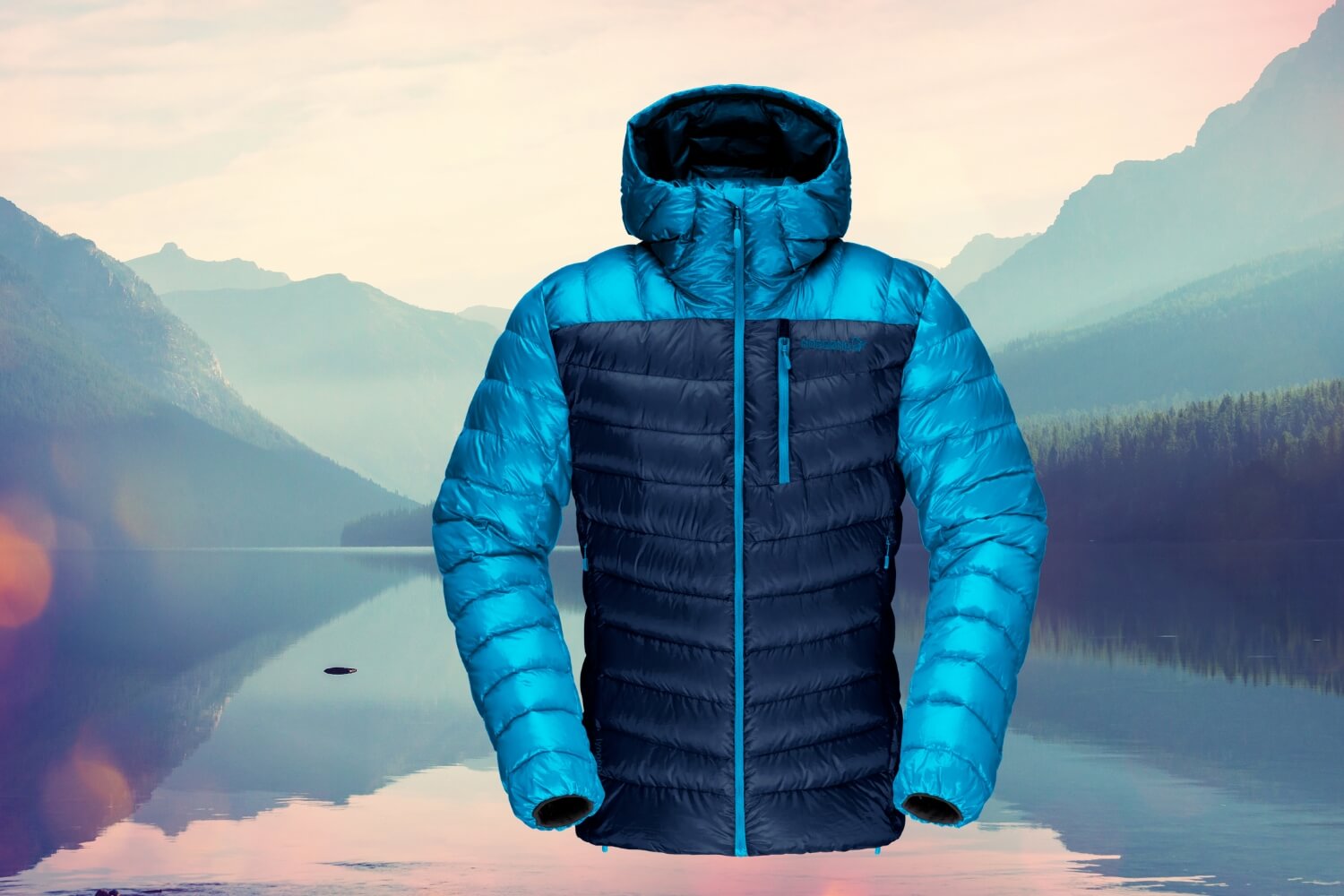
Price: $ 220 USD
Weight: 18 oz / 510 gr
Insulation: 800 Fill Power Goose Down Insulation, RDS Certified
Outer fabric: 100% Nylon
Pros: Premium down fill, No cold spots thanks to double wall construction, Omni-heat inner reflects body heat to increase warmth.
Cons: Down fill not moisture-resistant, Slightly baggy cuffs, No hood adjustment, Boxy fit, No inner pockets.
The Columbia Infinity Summit Double on the inside of the jacket uses the latest version of Columbia’s Omni-Heat technology, a heat-reflective layer made up of shiny metallic elements. On this jacket, it’s called the Omni-Heat Infinity, which consists of a new pattern of gold dots for even better heat retention. The outer fabric of the jacket, which Columbia calls a “double wall” construction. At first glance, it looks like a standard puffer with baffles, but pull the fabric taut and you’ll see there’s no seam line. They’re concealed behind an additional layer of face fabric, designed to block wind and eliminate cold spots by trapping even more warm air inside the jacket.
The fill itself is premium 800FP RDS certified goose down, while the shell and lining are made from nylon ripstop fabric. The feature set is relatively simple but functional, with elasticated cuffs and hood, drawcord hem, and three pockets: two partially lined handwarmers and a zippered chest pocket. It doesn’t seem to inhibit breathability to any great extent, particularly in this puffer, which isn’t primarily designed to be worn during high-intensity activities. On the other hand, the metallic sheen of the lining seems to make the jacket feel colder and a bit less inviting when you first put it on, though the feeling soon wears off. Still, it’s not as comfortable as a conventional cloth liner.
At just over 500g, this is a mid-weight down, but the 800FP down claims to offer a good level of warmth for that weight. It’s reasonably packable and designed to stow in its own chest pocket. The fit is perhaps a bit boxy, which means it layers easily enough, but it’s not designed to fit neatly under a shell; Wear it as a stand-alone outer layer instead of a mid layer. Definitely, this jacket is one of the best options if you plan to explore the Ausangate routes, the Inca Trail to Machu Picchu, the Lares Trek, the Ancascocha Trek, the Quelccaya Glacier Expedition, and any route in the Andes. Keep in mind that the weather conditions are highly variable throughout the day in the Andes, since in the morning there is intense cold above 3,500 masl, and when the sun begins to show some heat, for this reason we recommend always having at hand your feather or synthetic fiber jacket that will take care of the winds at sunset, or icy nights.
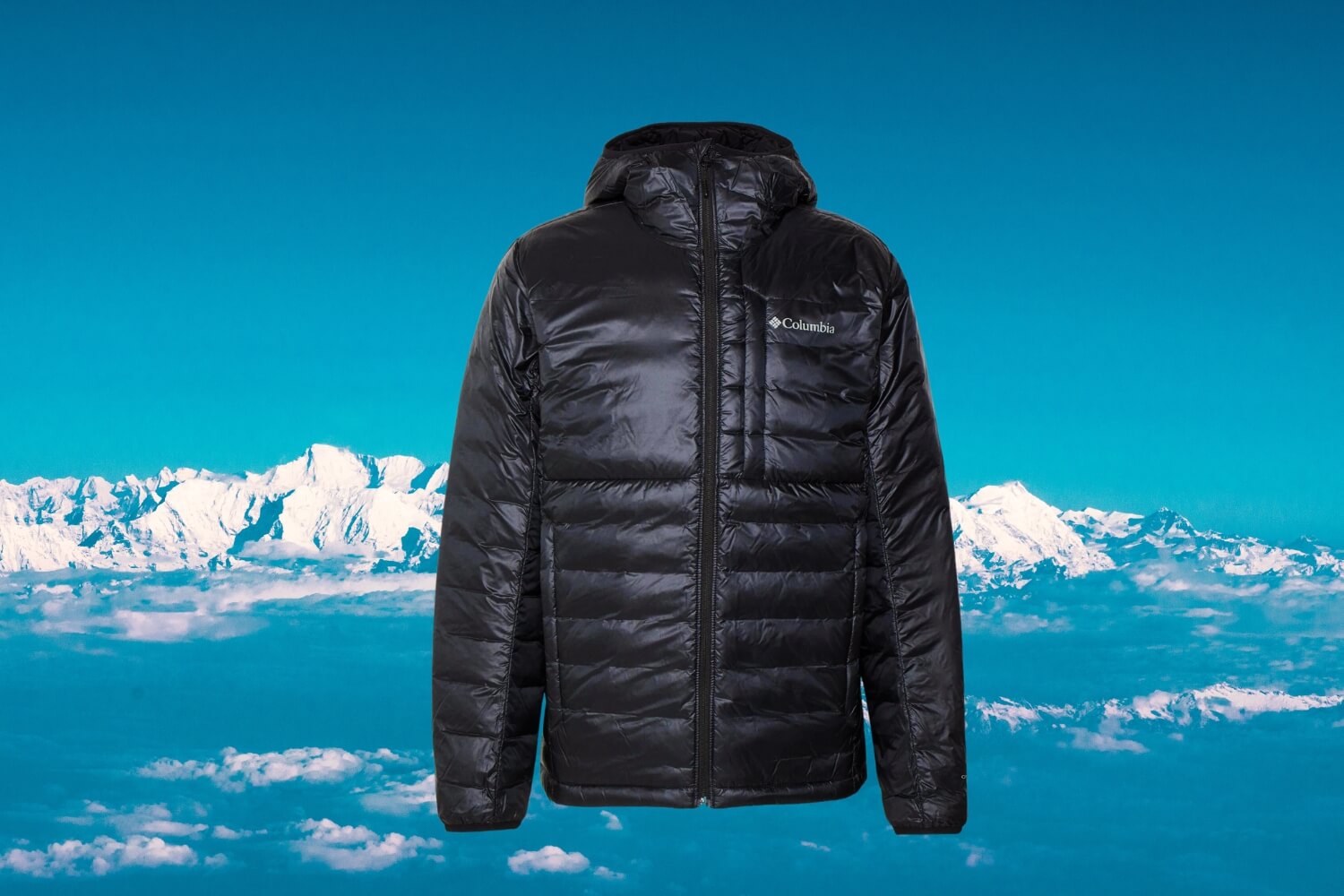

Discover the largest trail used by the Incas, to communicate between the sacred cities of Machu Picchu and Choquequirao, passing through the high mountains of the snowy Salkantay. Our tour is designed for lovers of the most demanding trekking circuits.
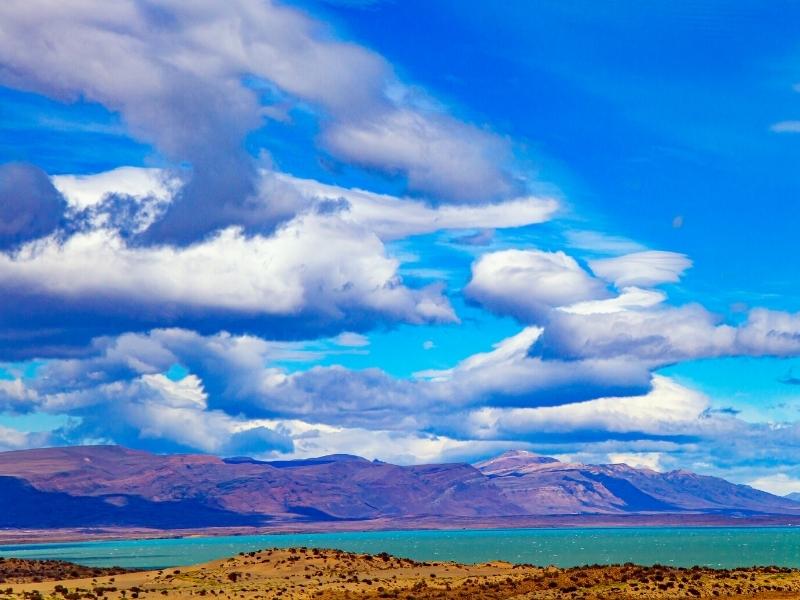
Ausangate is home to some of the most breathtaking natural wonders on earth. A must visit is Sibinacocha Lake. Top to bottom, you’ll see a glorious storyline of mountains, including a large portion of the Andes buried under centuries of ice and snow, as well as, glaciers, glacial lakes, and lush andean valleys.
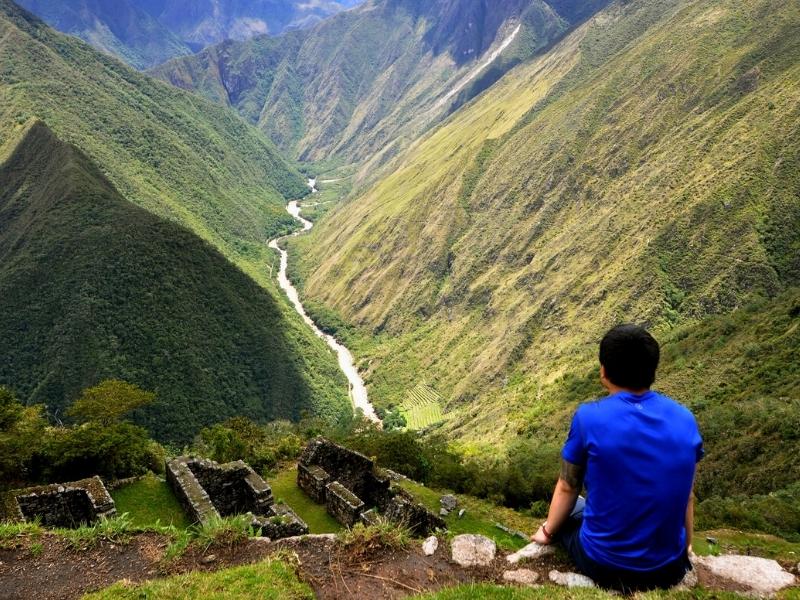
Explore the Manu Amazon Rainforest & Inca Trail hike to Machu Picchu, you will enjoy the best adventures in Peru, exploring amazing inca trail routes and the best amazon wildlife with our local tour guides, in small groups.
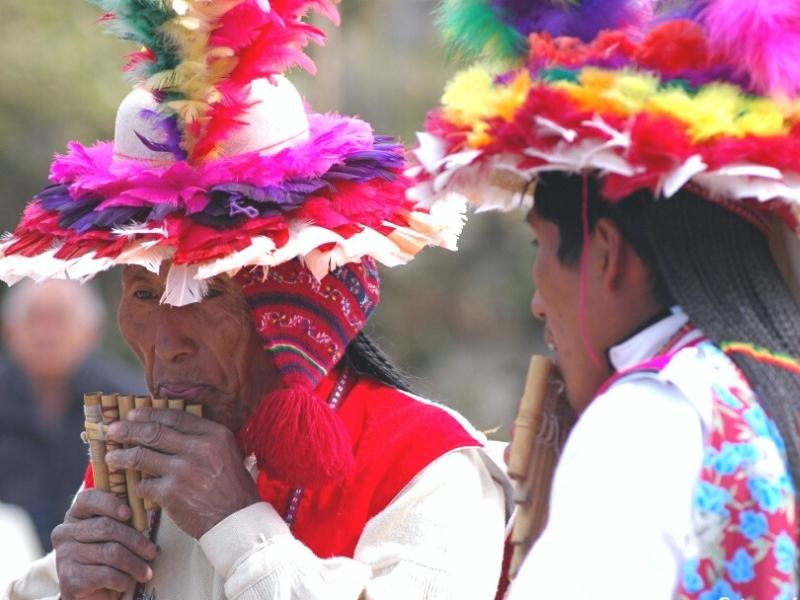
Sublime landscapes, wildlife, history, culture - Peru has more than its fair share. Its famed snow-capped Andean peaks shelter the temples and fortresses of the Inca and other pre-Columbian cultures, linked by a network of paved trails.


The classic Inca Trail hike to Machu Picchu is one of the world's greatest hikes. Along the 45 km you will explore unique andean valleys, lush mountain forest.An exquisite architecture of the Inca sanctuaries, which will dazzle you for its fineness and location within the Andes.
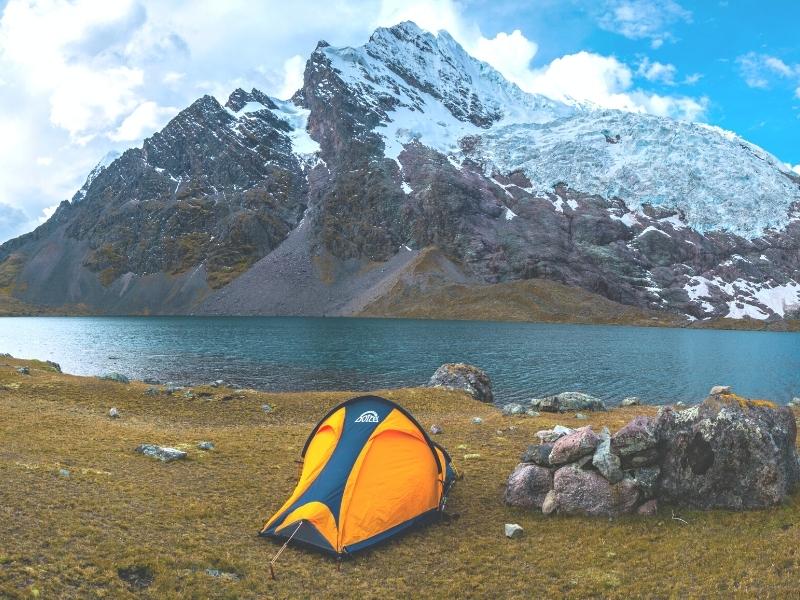
Ausangate is an excellent and quiet/remote trekking circuit offering stunning features such as spectacular mountain scenery, snow-capped peaks, hot springs, turquoise lakes, glaciers, herds of llamas, alpacas, and wild vicuña, picturesque villages, and traditionally dressed Quechua people.